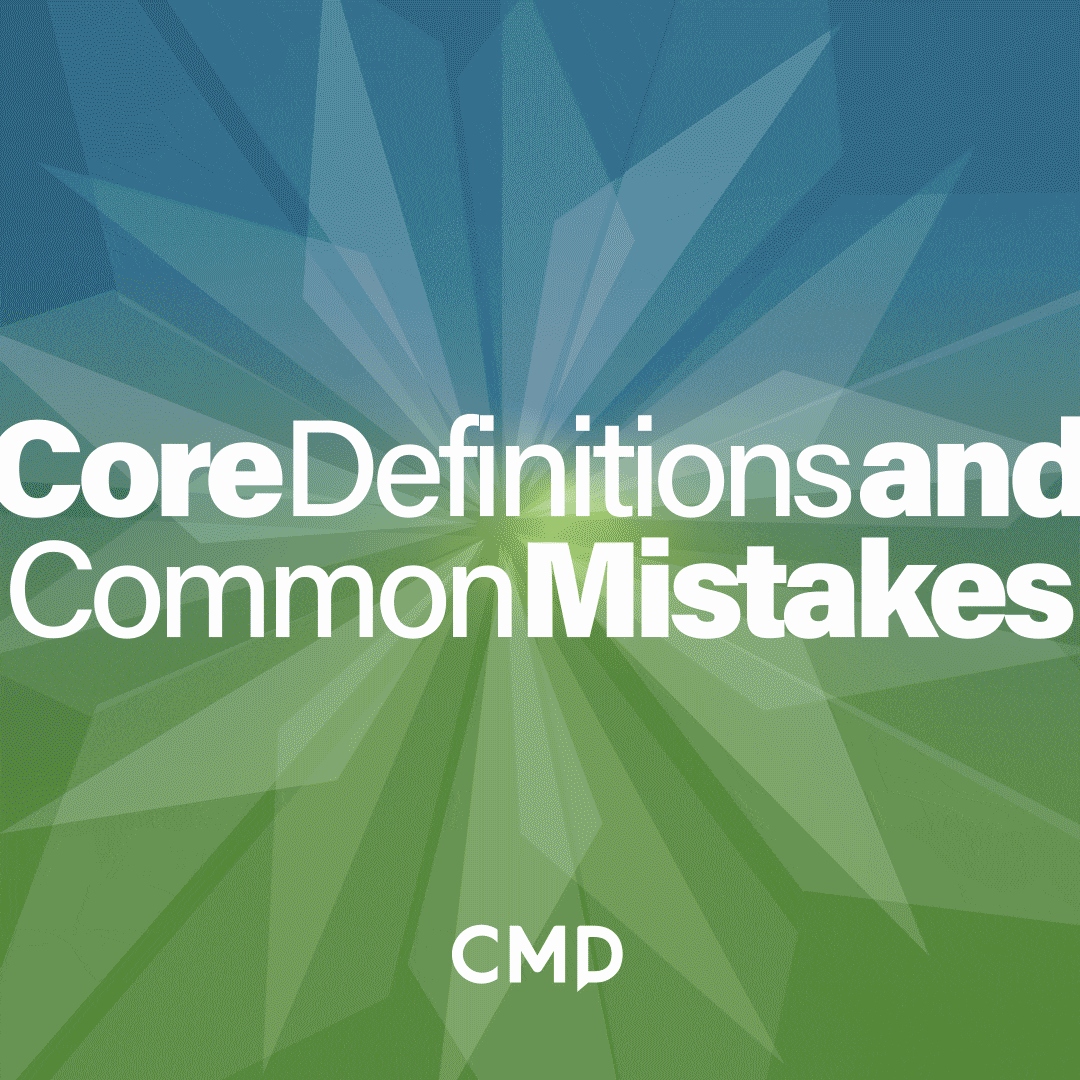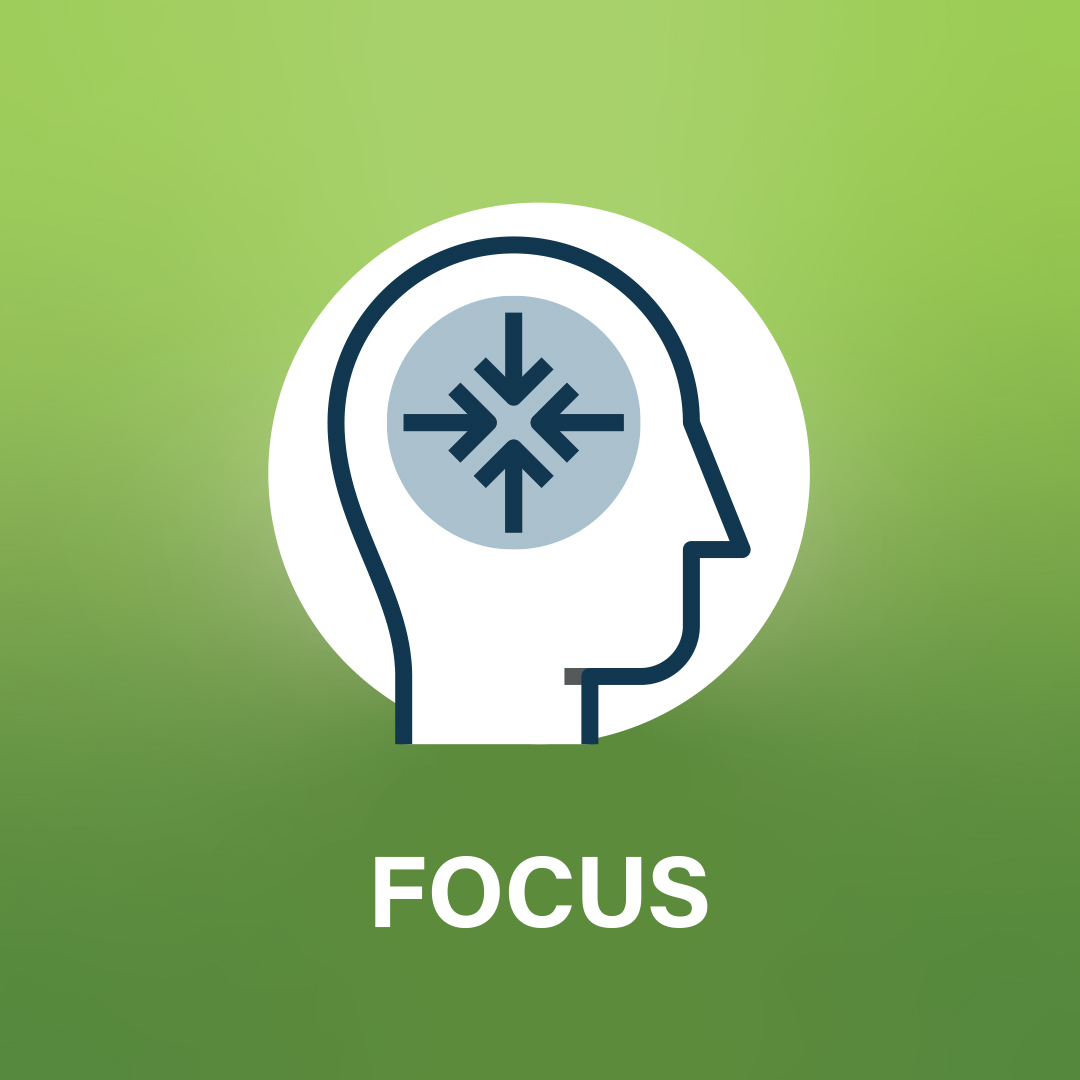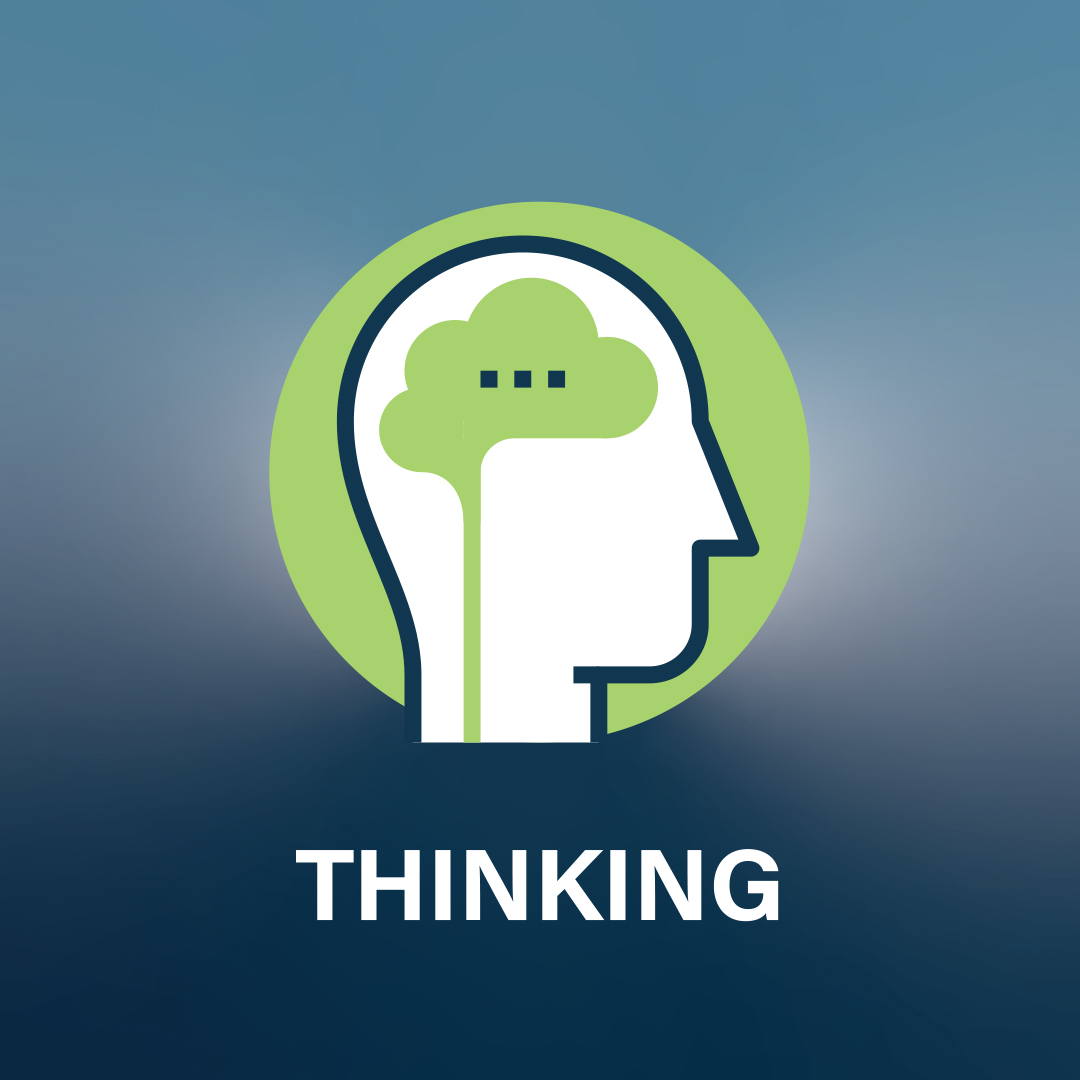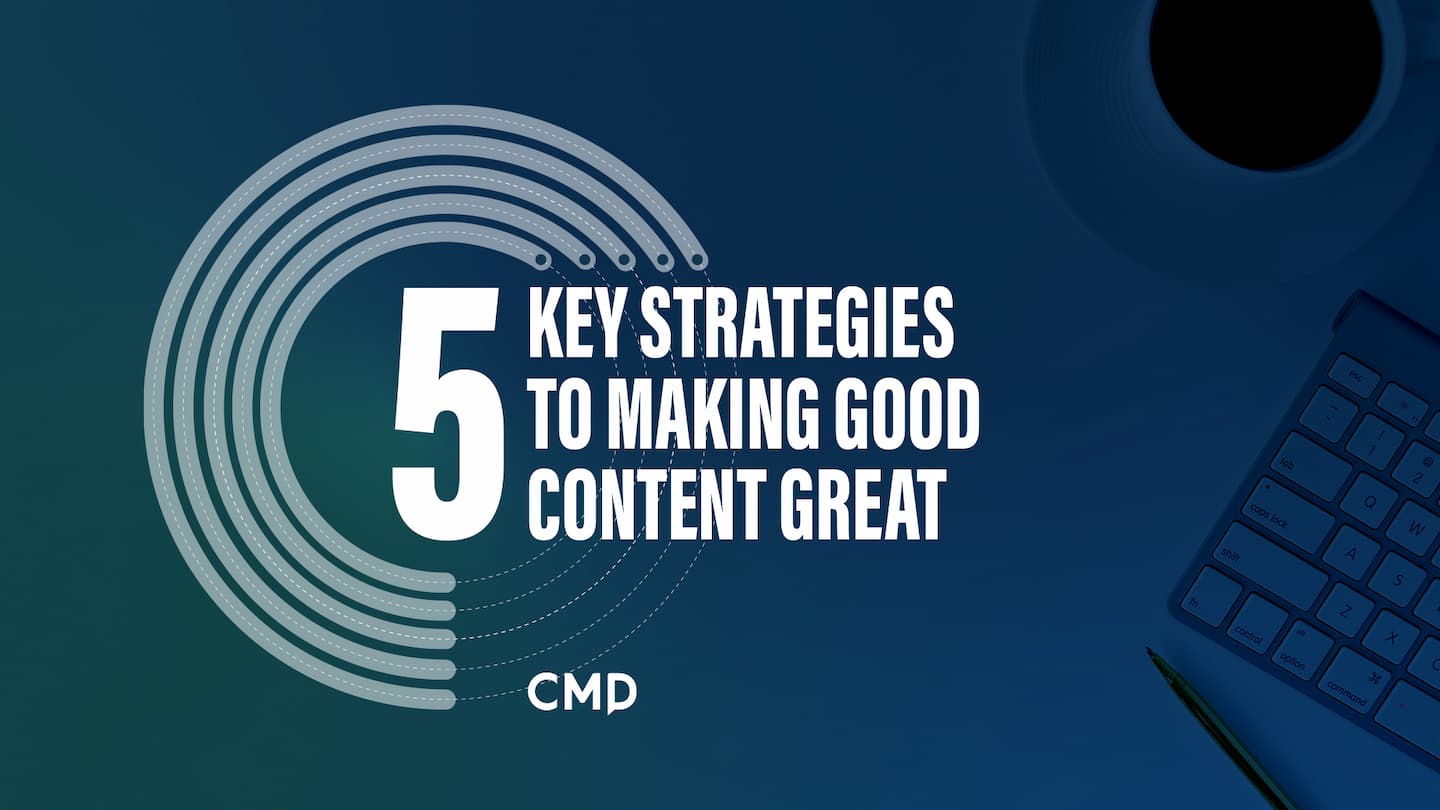Standing out in a sea of content is the charge—and challenge—for B2B writers in today’s digital business environment. Writing well isn’t enough, nor is an outcome of purchase transactions. Instead, measuring great writing means delivering value to readers who, ultimately, act to extend their relationship with your brand.
Good content yields transactional revenues; great content results in engagement, surfaces new opportunities, and builds long-term relationships. The good news is that just five key strategies can take content from being good to great.
Core definitions and common mistakes
To begin, let’s get a working definition of good vs. great content. Good content covers the basics of who, what, when, where, and how. Great content goes further by addressing why it matters and clarifying meaningful nuances.

| Good content | Great content |
| Offers information | Has relevant substance |
| Answers reader questions | Provokes reader questions |
| Shares data | Invites discovery |
| Reflects current thinking | Inspires new perspective |
| Promotes the brand as hero | Promotes the reader as hero |
| Gives knowledge points | Stimulates fresh insight |
| Results in transaction | Results in relationship |
B2B writers can inadvertently make common mistakes when developing content. You’ll see that each of these points starts with something intended to be a positive but becomes distorted from a reader point of view.
- Focusing on features, which orients the piece to sales vs. connection with the reader. It also feels like a “direct hit” approach around sales and, well, nobody likes that.
- Speaking to every possible reader in an audience instead of an individual person who will read the piece, making it feel inauthentic.
- Making the piece only about today, which means it becomes transitory and cannot stand the test of time.
- Telling the reader what to think instead of creating a reader experience (of discovery, insight, or fresh thinking).
- Marketing a transaction instead of building the relationship for sustainable business.
Essentially, good content gets a point across to the reader, while great content leads readers through an impactful experience. In any case, all content requires a few basics, as follows.
The basics
For quick contextual understanding, let’s look at several basics that help undergird all B2B content. Each of the following is worthy of its own article. What you are about to read are deceptively brief summaries of significant best practices.
Audience: All content needs to know its audience, which determines the problem being addressed, the language used to reference its solution, and the essential value for the reader. Copywriters need to clearly understand readers’ points of resolution, meaning how the reader will come to relationship and purchasing decisions.
SEO: All content should incorporate best search engine optimization (SEO) practices for findability and application to industry specifics. To get an idea of search engine phrasing, simply go to Google and start typing what you think someone would look for to find your topic; the first five results of common searches will appear. If your topic is not there, revise your search term until you see what people are searching for relative to your topic. A quick tip: be sure to use an online headline analyzer to ensure you have strong headlines and subject lines that capture attention.
Brand representative: All content should reflect the brand voice and tone for cohesive presentation and, ideally, reader engagement. As a quick tip, if what is written could apply to and represent another company equally as well, it is not great content. Two key elements that guide copywriting are the brand values and personality; if either is unclear or unknown, research brand archetypes as a starting point in making that determination.
Clear and concise: All content should say only what is needed to be helpful, with clear and appropriate language, ideally industry specific, so your reader knows you are speaking to their interests. In terms of length, less is usually more when it comes to copywriting. The exception is a reference-type piece that is supported by establishing core as well as topically related information. A quick tip: read your piece out loud to catch rough spots, flow snafus, or excess wordage.
CTA: All content should have a call to action (CTA) so the reader knows what to do next after consuming the piece. Conversions are a by-product of great content. That said, the CTA should deliver a next practical action that helps the reader continue to benefit from their reading investment. A good CTA helps set the stage for the reader to have a psychological win with the brand, which creates an emotionally compelling, albeit subconscious, bond with the brand.

One last point to set the foundation for great content relative to a brand is that it needs to build awareness about the brand and solution (top of funnel), teach people how to relate to and use that solution (middle of funnel), and then explain why that solution is the reader’s best option (bottom of funnel). Without having a diverse blend of all three levels of content, readers will be challenged to progress through learning about the solutions your brand offers.
Having covered those points means we can move on to the five keys that make good content great.
The five key strategies to great copy
High-quality content delivers worthy, relevant, and distinctive value to an identified audience. It delivers not only what is expected but what is needed—and it is harder to write than it looks.
Great content has five hallmarks: focus, thinking, perspective, syntax, and presentation. Following is a breakdown of each hallmark, along with questions you can ask and helpful tips you can use to evaluate a piece of content.

Key Strategy No. 1: Focus
Like a laser, content that goes deep with a narrow focus has greater power to make an impact. Exploring a small slice of a topic can surface distinctions that could be lost in broad-stroke copy.
- What would you like your reader to understand or do after reading this piece?
- Is it clear what specific problem is addressed in the piece?
- What is the predicament or consequence of the reader not solving the topic at hand?
- What misconceptions can get in the way of the reader’s understanding of the topic?
- What does the reader need to believe for the best possible outcome?
- Does the piece answer the “so what?” question effectively?
Concentrating the content to address a specific narrative allows the brand to lead signature conversations in the market. The net result is to stand out by articulating specific details that can otherwise be overlooked.

Key Strategy No. 2: Thinking
This key to great content may be the most challenging, and rewarding, one to achieve—original thinking. Value for the reader is creating clarity on a topic by offering a different angle, a new perspective, or a unique edge. Help the reader know something they don’t already know or, ideally, cannot get somewhere else. Questions to ask before writing content to provoke original thinking are as follows:
- Why is this problem, issue, or challenge really happening?
- What are the implications of not understanding the issue at hand?
- What is the opposite argument to counter what mainstream sources are saying?
- Where is the constraint in known solutions for this issue today? What is—and is not—being done to address it?
- What is the potential vision of the future when the issue is resolved?
- What would have to occur for that vision to become reality?
- Bonus question to generate the next content topic: what is the next challenge that surfaces after this problem is resolved?
Using critical and, ideally, original thinking explores the topic in a way that gives the reader new considerations around the topic. And, generally speaking, the person (or brand) that reveals new insights around a challenge is often seen as the one who can best solve it.

Key Strategy No. 3: Perspective
In addition to narrow focus and original thinking, great content offers a point of view on the topic. Perspective is the most valuable offer a person, or brand, can offer because it is unique and based on individual experience and belief systems.
There are five foundational points of view, among others, that can help the reader in practical ways:
- Sound an alarm as a disruptor around what’s happening or the results of what’s happening
- Tell the future based on today’s circumstances
- Inspire possibilities for innovation, intensive action, or increased attention
- Set benchmarks or update standards around current practices
- Highlight intangible benefits of addressing OR solving the situation
When content expresses perspective, it allows the reader to see the topic through new eyes, which can be either validating or game-changing. A strong perspective can incite dialogue or start a movement. To the degree there is reaction, there is power. Having a perspective, a point of view, is one of the most powerful aspects of great content.

Key Strategy No. 4: Syntax
Syntax is the art and science of putting the right things in the right order. Organizational syntax enables the reader to experience psychological wins by understanding increments of knowledge that build to cumulative insight. The content creates a mini journey that links the reader’s awareness into wins. The outcome may simply be awareness, in which case the reader is still more informed than before they read the piece.
There are various frameworks that help organize great content into easily consumable pieces:
GET TO BY: This formula can act as a compass to guide copywriting and can help make sure the intention of the piece is known from the outset. Essentially, the formula is “get X (someone) to do Y (something) by Z (taking action).”
The motivating sequence: This five-step formula ensures you 1) get your reader’s attention, then 2) identify a problem or need, 3) position your answer to it by explaining your offer, 4) prove your answer with measurable proof points, and 5) ask the reader to act toward solving the problem.
The six-step formula: This framework works for almost any type of content, from landing page to email, and begins by 1) knowing who will be reading the content, then 2) describing the problem they face in detail, along with 3) the consequences of not solving it and the need to address the problem. At that point, you introduce 4) the solution and 5) the benefits of that solution. The final point to include is 6) the unique credibility points about the brand in delivering the solution (think value proposition).
This kind of organizational syntax helps offers stay out of the “commodity zone,” where any provider could deliver the solution. Syntax helps the content to create a readership journey that links increasing awareness to new insight and positive action for, ultimately, bottom-line results.

Key Strategy No. 5: Presentation
In the absence of narrative, content becomes vapid. However, in the absence of visual content, even the best narrative is easily overlooked. Presentation ensures cohesive voice for brand representation throughout omnichannel visibility. Readers learn in different ways, so content does best when narrative is complemented by appropriate images, infographics, and video. Naturally, distribution in various channels becomes a factor because the final outlets will determine the best formats to fit the channel. Again, this topic is worthy of a much deeper exploration; the point for this piece is to highlight the need for cohesive voice between narrative, visuals, and formats.
Great content becomes memorable and shareable when there are quotable sound bites sprinkled throughout the copy. Where appropriate, it also helps to show examples and backup documentation of key points. Using visuals to communicate these points can be highly effective in helping readers take in substantive information more easily.

What can you do now?
Overall, the five keys to great content—focus, thinking, perspective, syntax, and presentation—can help make your good content become great content.
When it’s helpful, our experts are standing by to look at your existing content and provide feedback, assess your content strategy, or even help evaluate and measure the impact of your content in your market. Naturally, we can also support your content development initiatives. Just ping us to schedule a convenient connection time, and we’ll make it happen. Until then, here’s to creating and sharing great content.
Related Perspectives

Keeping Your Cool on Social Media in a Boiling Hot Year
This year, the temperature on social is already hitting triple digits. To succeed in this heated arena, brands cannot operate with a status quo strategy. Explore great new ways to achieve your goals and avoid the pitfalls.

The Trust-Content-Revenue Love Triangle
Trust is the foundation upon which lasting B2B relationships are built. When potential clients trust your brand, they’re more likely to engage with your content, consider your solutions, and ultimately convert into customers.
